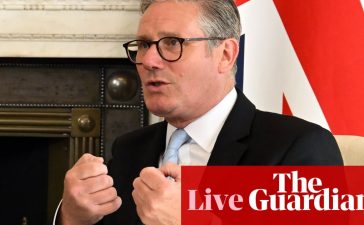According to John Leiper, chief investment officer at Titan Asset Management, the shifting narrative from the Federal Reserve about its plans to cut rates in 2024 has confirmed that short duration is the “right place to be”.
At the end of last year, the Federal Reserve sparked a market rally after it moved away from its hawkish stance on interest rates and indicated that cuts could begin in 2024. Markets are currently pricing in approximately three rate cuts from the Fed this year, but at the time as many as six were forecast.
This optimism also spurred a historic two-month rally in bond prices, which prevented fixed income markets from experiencing a third consecutive year of declines.
Paul Syms, head of EMEA ETF fixed income and commodity product management at Invesco, said yields hit the “best level” they had been at for over a decade last year.
Jerome Powell: Fed united in cutting rates this year
However, according to David Zahn, head of European fixed income at Franklin Templeton, the extent to which the market was pricing in these cuts at the time was “too aggressive”, which led to many experts opting for shorter durations on their fixed income products.
Myles Renouf, investment manager at Oakglen, said this is because yields on shorter-dated fixed-income holdings are more directly influenced by central bank moves.
At the latest Fed meeting, chair of the Federal Reserve Jerome Powell said March rate cuts were not the “base case” scenario, leading to markets reducing the number of estimated rate cuts for the year and predicting cuts may start later in the year.
According to Leiper, this supported the positioning of being in short duration until the uncertainty died down, at which point longer duration “may be something to consider later in the year”.
Franklin Templeton’s Zahn agreed, adding that a reason longer duration may serve better later in the year is because short duration ETFs are unlikely to provide the best total return due to their low duration.
BoE policymaker pushes for rate cuts in warning of ‘downside risks’ for UK economy – reports
“Therefore, if an investor believes that yields will rally across the curve, it may be prudent to have an allocation to some longer duration ETFs even if they expect the curve to steepen,” he said.
“Alternatively, if they believe that the rate cuts are premature and will lead to higher inflation, or that deficits/supply will keep pressure on long-dated yields, they will need to determine how far out the curve will pivot to determine which maturities will achieve the best returns.”
Oakglen’s Renouf noted longer-term fixed income yields are also impacted by changes in central bank rates, but they are also influenced by other factors such as economic growth and inflation rate expectations.
“Another key aspect is to consider the level of government debt, which also has an impact on the longer-term fixed income yields,” he said.
He added that there are concerns around the long-term sustainability of governments running with deficits which is likely to impact long-term fixed income yields.
According to Zahn, this tactical positioning works well within active fixed income ETFs because derivatives can be used to hedge the duration of the fund, cash can be held until there is an appropriate new issue to invest in, relative value switches between bonds can be executed and yield curve positioning can be implemented.
Fixed income ETF popularity grows as higher yields tempt low-cost investors
Syms said that part of the value of using government bond ETFs for investors is it allows them to target the specific duration or part of the yield curve they want based on their needs or the economic outlook.
“Some investors will choose broad exposures across the main asset classes to benefit from the low-cost exposure to core markets, while others will use ETFs primarily for tactical asset allocation purposes or for targeted exposures given the granularity of offering available,” he said.
“For example, the range of maturities on offer in government bond ETFs allows investors to target a specific duration or part of the yield curve based on their needs or economic outlook,” he added, adding that it can be provided in an “efficient, diversified” way.










